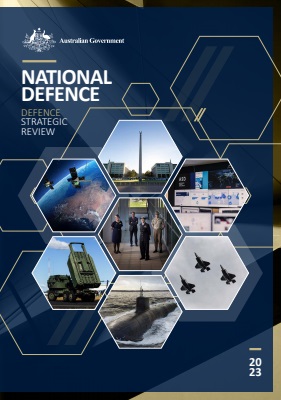There is much to like in the Defence Strategic Review. The emphasis on missiles, on longer range, on the need for urgent action are all desperately necessary. The classified version is hopefully sharper in identifying the source of the threat.

The review slips into imprecise language when it says that “major power competition has the potential to threaten our interests’’. That’s wrong. China threatens our interests. We need the United States and like-minded democracies to actively compete against China’s threat to the status quo.
Labor’s job now is implementation. I see five main challenges: how the government reconciles the review with its softer public approach to China; the absence of a war-fighting strategy for Defence; the cost; the timeframe and Defence capacity to take on the job.
Richard Marles’ aim to give Defence “impactful projection” conflicts with the foreign policy goal to “stabilise” relations with China. This fundamentally goes to how the Albanese government talks to Australians about China.
Australians will understand that a strategy buying large numbers of long-range missiles is about countering China’s threat to the region. But Anthony Albanese publicly welcomed Daniel Andrews and Mark McGowan’s fawning visits to China, deepening our economic dependence.
Penny Wong’s foreign policy calls to maintain the status quo. That’s a fine aspiration but it runs aground on the reality that Xi is openly attacking the status quo. I’ll wager that not a single intelligence report in front of the government says that the status quo is holding.
Just like previous Coalition governments, Labor can’t find the right language to talk about China. A failure to speak truths that most Australians already know weakens the government’s defence efforts.
Secondly, the review’s focus is on equipment, but that needs to be informed by thinking about how the Australian Defence Force plans to fight.
The most likely conflict will see Australia fighting in the region as part of a coalition of like-minded democracies. Maritime and air warfare will dominate but controlling the ground through deployed land forces will be decisive.
A strategic plan for how the ADF will fight needs to shape equipment decisions. Without such a plan the army risks having a jumble of penny-packet capabilities with no clear focus. Perhaps this is what is intended with the “inaugural National Defence Strategy”, planned for 2024.
Maybe the classified review has more clarity, but the public report offers a jumble of capability recommendations, some precise, others ridiculously vague. It gives precise numbers of army vehicles to cut, but squibs more consequential decisions on the navy surface fleet, calling for “an independent analysis of navy’s surface combatant fleet’’. Wasn’t that the review’s job?
On timing, building missile stockpiles and factories needs to happen with breakneck speed and that means changing how Defence does business.
This is the fundamental test of government seriousness. We need a new agency for rapid acquisition and harnessing industry innovation and the review calls for an “Advanced Strategic Capabilities Accelerator’’.
If business as usual methods prevail it means that we will not see material outcomes strengthening Defence in timeframes that make a difference to the balance of power in the Indo-Pacific.
Point four: money. That straining sound you hear is the Defence engine struggling to deliver a plan costing at least 3 per cent of gross national product with only 2 per cent of funding available.
Rest assured that Labor will have no choice but to over-program Defence’s capital equipment budget because spending on projects like submarines starts small and grows big when construction starts.
It would be a fatal mistake for Labor to force Defence to cut spending today maintaining equipment, keeping bases functioning and exercising and training. These measures produce short-term savings but they also run down the force, lower morale and slow the ADF’s ability to be ready for short-notice action.
The government’s response to the review statement that “more funding will be required” is to claim it keep “maintaining the overall level of Defence funding over the forward estimates’’. This delays hard decisions for four more years.
If the current strategic outlook can’t spark a more committed and immediate funding response from government, nothing other than conflict will.
Can Defence take on the extra demands of more military capability produced more quickly? It has taken an external review to reveal that many current plans are vastly inadequate, reflect “a bygone era” and the timelines don’t address reality.
The review judges that “for the first time in 80 years, we must go back to fundamentals, to take a first-principles approach as to how we manage and seek to avoid the highest level of strategic risk we now face as a nation’’. How could this have happened? Defence should be shaken to the core by this finding.
Defence as an organisation needs to be rebuilt, reshaped, refocused and re-energised. Can the organisation do that to itself? The review suggests a Defence Strategic Review Management Board chaired by the secretary and Chief of Defence Force. That sounds like business as usual to me.
A final footnote: the review makes a welcome call to strengthen “the network of bases, ports and barracks” in the north as integral to a “sovereign Australian posture’’. This should give the Albanese government the confidence to address the problem of the Port of Darwin being leased to a Chinese company for 99 years. One can only hope.
